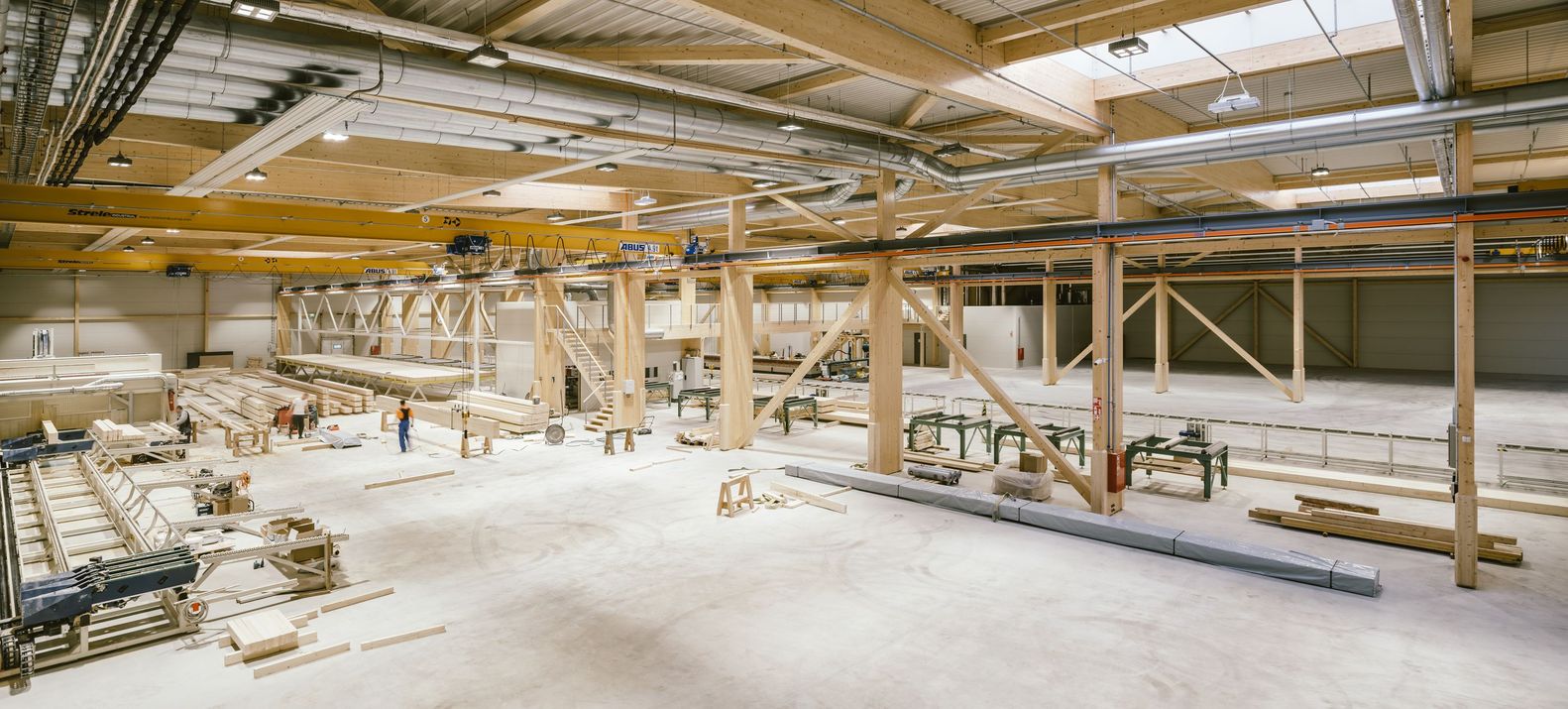CATEGORIES
WPC Wall Panel: The Ultimate Guide to Modern Interior Wall Solutions
Wood Plastic Composite (WPC) wall panels are rapidly transforming interior design, offering a stunning blend of aesthetics, durability, and practicality. As a manufacturer with years of experience in the industry, I've seen firsthand how these innovative composite panels are replacing traditional materials. This article delves deep into the world of WPC wall panels, exploring their benefits, types, installation, and why they are becoming the preferred choice for professionals like construction company owners, interior designers, and architects. If you're looking for a versatile, high-quality, and cost-effective solution for your next project, understanding WPC wall panels is essential. We'll cover everything from technical specifications of wpc to design possibilities, providing insights particularly valuable for procurement officers like Mark Wilson who value quality, reliability, and clear communication.
What Exactly Are WPC Wall Panels Made Of?
WPC wall panels, short for Wood Plastic Composite wall panels, represent a sophisticated blend of natural and synthetic materials. At their core, they are typically composed of wood fiber (like bamboo or wood flour) and recycled plastic (such as polyethylene, polypropylene, or PVC). These primary components are combined with bonding agents, foaming agents, and specific additives that enhance properties like color stability, UV resistance, and fire retardancy. The mixture is then processed through extrusion, where it's shaped into panels of various profiles and dimensions.
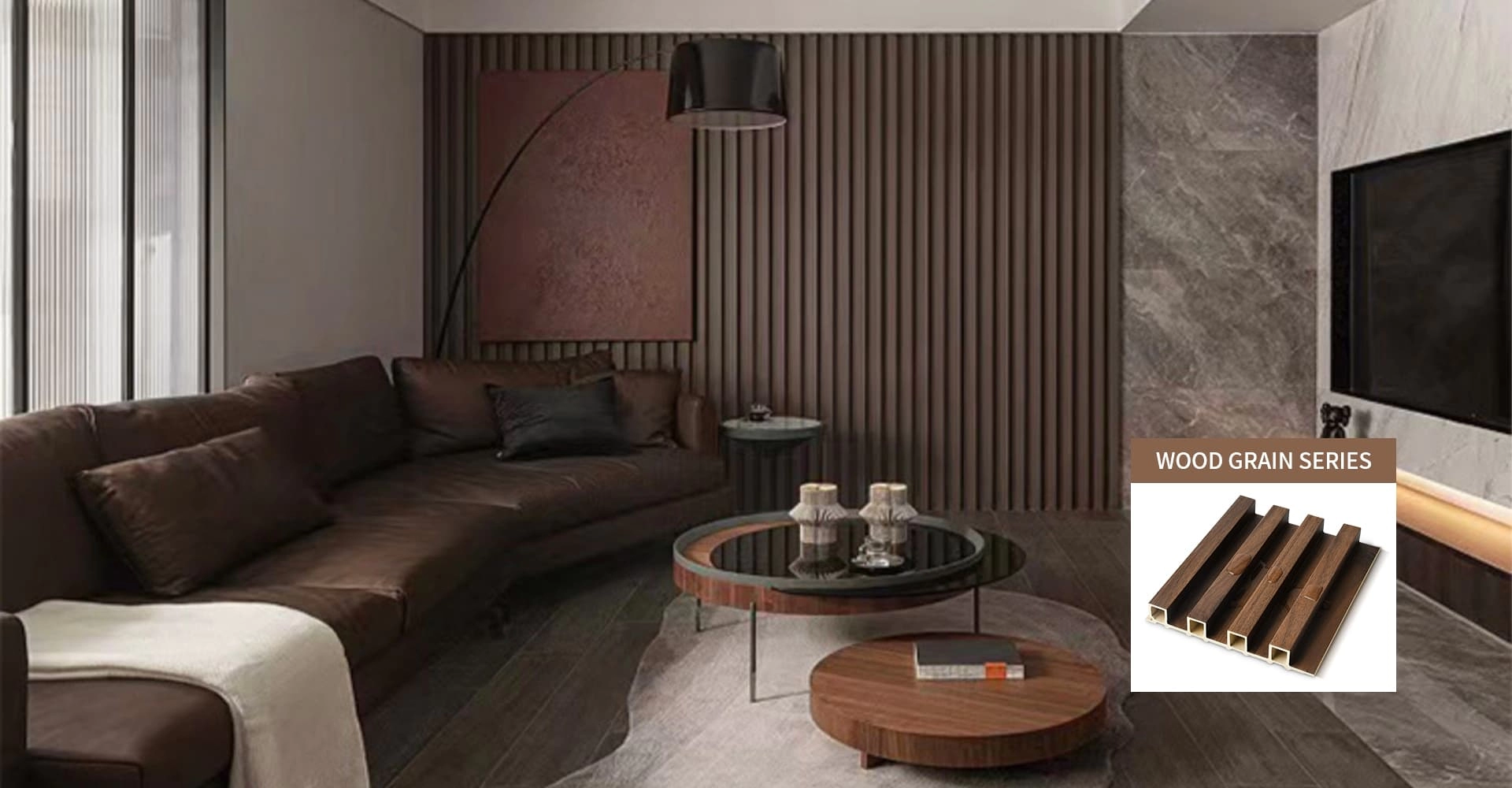
This manufacturing process results in a plastic composite material that uniquely captures the aesthetic appeal of natural wood while offering superior performance characteristics. Unlike solid wood, WPC doesn't suffer from issues like rotting, warping, or termite infestation. The precise ratio of wood fiber to plastic can vary, influencing the final panel's rigidity, texture, and weight. As a factory owner, we carefully control this composition to ensure consistent quality and meet specific performance requirements, resulting in a reliable wood-plastic product.
The final product is a robust interior wall panel that feels substantial yet manageable. The thickness often ranges from 8mm to 25mm or more, depending on the intended application and desired profile, such as the popular flute design. This composition makes WPC wall panels an excellent alternative to traditional wood building materials, offering enhanced durability and lower maintenance in one package.
Why Should You Choose WPC Panels for Your Interior Wall Project in 2024?
The popularity of WPC wall panels isn't accidental; it's driven by a compelling set of advantages that resonate strongly in 2024's design landscape. Firstly, their aesthetic versatility is remarkable. Whether you desire the warmth of wood grain, the modern appeal of a fluted wall, or sleek solid colors like light grey, WPC offers vast design possibilities. They can effortlessly create a stunning accent wall, add texture to a room, or serve as elegant wainscoting.
Secondly, the practical benefits are significant. WPC panels boast excellent moisture resistance, making them suitable for areas where traditional wood might fail. They are highly durable, resistant to scratches, impacts, and fading, ensuring a long-lasting finish with minimal upkeep – a key factor for busy commercial spaces or homes. This inherent toughness translates to low maintenance requirements; typically, just simple cleaning is needed.
Furthermore, the ease of installation is a major draw. Many WPC wall panel systems feature interlocking or tongue-and-groove designs, making the easy installation process faster and less labor-intensive compared to materials like tile or extensive plasterwork. This can lead to significant savings on project timelines and labor costs, a crucial consideration for procurement professionals managing budgets and deadlines. Their ability to cover imperfections on existing walls also adds to their practicality.
Are WPC Panels Genuinely Waterproof for Bathrooms and Kitchens?
One of the most frequently asked questions pertains to the suitability of WPC wall panels for moisture-prone environments like bathrooms and kitchens. The answer is a resounding yes, with some clarification. Due to their composite nature, particularly the encapsulation of wood fiber by plastic, WPC panels exhibit excellent resistance to water absorption. Unlike solid wood or MDF, they won't swell, warp, rot, or encourage mold growth when exposed to humidity or splashes. This makes them a fantastic waterproof wall solution.
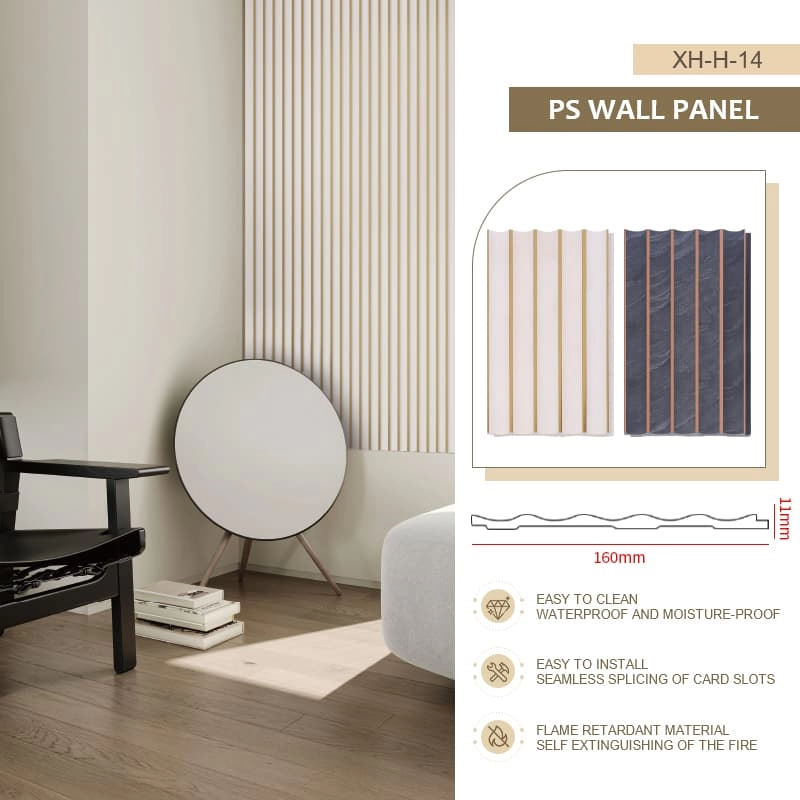
However, it's crucial to differentiate between "water-resistant" and "completely waterproof." While the panels themselves resist water exceptionally well, proper installation is key, especially in areas with direct water exposure like shower surrounds. Ensuring joints are correctly sealed and edges are protected prevents water from seeping behind the panels, which could potentially damage the underlying structure over time. For extremely wet zones, pairing WPC wall panels with appropriate sealants and installation techniques ensures a reliable and long-lasting barrier.
Compared to traditional wall tiles, WPC panels offer a grout-free surface, simplifying cleaning and eliminating potential points for mold growth. This inherent moisture resistance and ease of maintenance make them an increasingly popular choice not just for bathrooms and kitchens, but also for basements, laundry rooms, and commercial facilities requiring hygienic surfaces. They provide a functional waterproof decorative solution.
How Simple is the Installation Process for WPC Fluted Wall Panels?
Easy installation is a hallmark feature of WPC wall panels, particularly the popular fluted wall panels. Most systems are designed with the installer in mind, often featuring tongue-and-groove or interlocking mechanisms. This allows panels to click or slide together seamlessly, ensuring proper alignment and a secure fit. This significantly speeds up the installation compared to traditional methods like tiling or complex wood wall paneling.
Typically, WPC wall panels can be installed directly over existing walls (provided they are relatively flat and sound) or onto a framework of battens. Installation methods usually involve:
- Adhesive: Applying a suitable construction adhesive to the back of the panel or the battens.
- Mechanical Fasteners: Using nails, staples, or screws, often concealed within the joint system for a clean finish.
- Clips: Some systems utilize specific mounting clips that attach to the wall or battens, allowing the panels to snap into place.
The relatively lightweight nature of WPC panels compared to solid timber or large tiles also contributes to the ease of handling and installation. This makes it feasible for experienced do-it-yourself enthusiasts to tackle projects, although professional installation is always recommended for optimal results, especially on larger or more complex projects. The straightforward process means less disruption, quicker project completion, and potentially lower labor costs, making WPC wall panel is easy to integrate into various projects. Many find it simpler than installing traditional wood wall systems.
Exploring Design Diversity: What Textures, Flute Styles, and Wood Grain Effects are Available?
The design potential of WPC wall panels is truly expansive, catering to a wide range of interior design aesthetics. Manufacturers offer an impressive array of finishes, textures, and profiles. Wood grain effects are particularly popular, mimicking the look of various timber species like oak, walnut, or teak, but without the associated maintenance concerns. These grains can range from subtle and smooth to deeply textured for a more rustic feel.
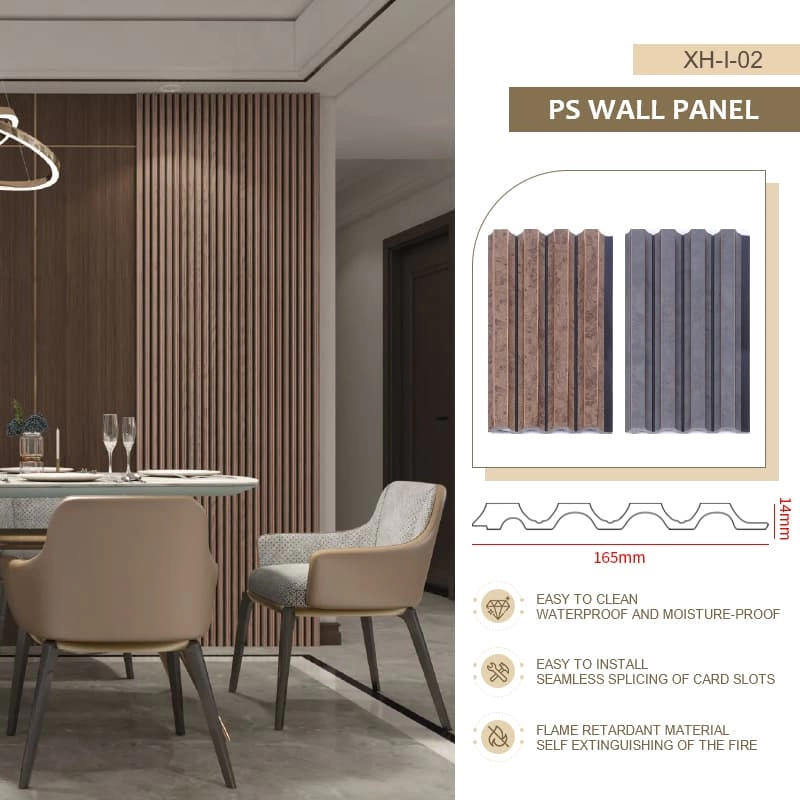
Fluted wall panels (also known as slat wall or grille panels) have surged in popularity, adding depth, shadow play, and a contemporary vertical rhythm to spaces. The flute profiles themselves vary – from fine, narrow channels to bold, wide ribs. These WPC fluted wall designs are incredibly effective for creating feature walls, covering columns, or adding interest to ceilings. Beyond flutes, 3D wall panels with geometric or organic patterns offer further opportunities for creating unique wall decor and wall art.
Color options extend beyond natural wood tones to include solid colors, metallic finishes, and even concrete or stone effects. The ability to customize color and texture allows designers and architects to achieve a very specific design vision. This versatility means WPC wall panels can complement styles from minimalist modern to cozy traditional, serving as wall panels decorative elements that enhance the overall home decoration scheme. You can explore various styles, including modern designs perfect for TV backgrounds or options suitable for various living spaces.
WPC vs. Solid Wood vs. PVC Wall Panels: Which is the Best Fit?
Choosing the right wall panels involves comparing materials based on project needs. Here's a quick comparison:
| Feature | WPC Wall Panel | Solid Wood Panel | PVC Wall Panel |
|---|---|---|---|
| Composition | Wood Fiber + Recycled Plastic | Natural Timber | Polyvinyl Chloride |
| Appearance | Mimics wood well, various textures | Natural beauty, unique grains | Often glossy, can look plastic-y |
| Water Resistance | Excellent | Poor (requires sealing) | Excellent |
| Durability | High (resists rot, insects, warp) | Moderate (prone to scratches, warp) | Moderate (can scratch/dent) |
| Maintenance | Low | High (requires sealing, refinish) | Low |
| Eco-Friendliness | Good (uses recycled content) | Varies (sustainable sourcing?) | Lower (petroleum-based) |
| Cost | Mid-range | High | Low to Mid-range |
| Installation | Relatively Easy | Moderate to Difficult | Generally Easy |
WPC Wall Panels: Offer a balanced solution, combining the look of solid wood with the low maintenance and water resistance of PVC, plus better eco-credentials due to recycled content. They are ideal for those wanting durability and aesthetics without the upkeep of natural wood. Their texture and wood grain options are often very convincing.
Solid Wood Panels: Provide unmatched natural beauty and warmth. However, they demand significant maintenance, are susceptible to moisture and pests, and usually come at a higher price point. Best suited for dry areas where budget and maintenance are less of a concern. Think classic wood wall paneling.
PVC Wall Panels: Are typically the most budget-friendly and highly waterproof. However, they can sometimes lack the aesthetic sophistication of WPC or wood, and their environmental impact is generally higher. Often used in utility areas or where budget is the primary driver. Options like PVC Marble Sheets offer a different aesthetic.
The choice depends on priorities: budget, desired look (wood wall vs. modern), location (wet vs. dry), and long-term maintenance tolerance. WPC panels often hit the sweet spot for many interior wall applications.
Are WPC Wall Panels an Environmentally Friendly Choice?
Environmental consciousness is increasingly important in selecting building materials. WPC wall panels score relatively well in this regard, making them an eco-friendly option compared to some alternatives. A key factor is their composition, which often utilizes recycled plastic and wood fiber. Using recycled materials reduces the demand for virgin plastics and diverts waste from landfills. The wood fiber component can also come from reclaimed wood sources or sawmill byproducts, lessening the need to harvest new timber.
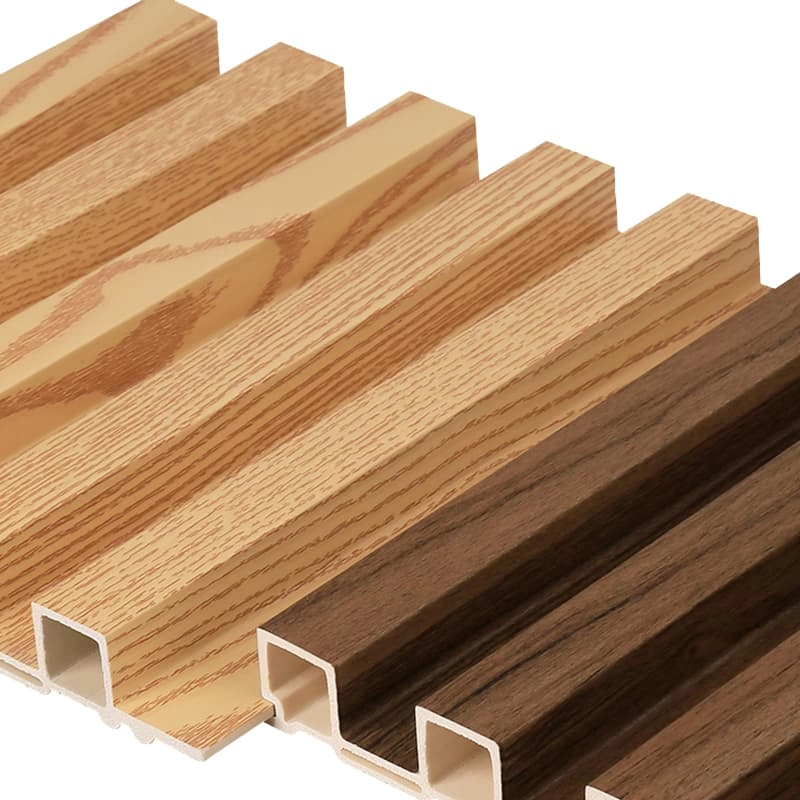
Furthermore, the durability and long-lasting nature of WPC wall panels contribute to their sustainability. Products that need replacing less frequently reduce resource consumption and waste generation over their lifecycle. Their low maintenance requirements also mean fewer chemicals (cleaners, sealants, paints) are needed over time compared to solid wood.
However, it's essential to consider the entire lifecycle. Manufacturing WPC involves energy consumption, and bonding agents or additives might have environmental impacts. Responsible manufacturers strive to minimize these impacts through efficient processes and careful material selection. Look for suppliers who are transparent about their sourcing and manufacturing, and inquire about certifications like FSC (Forest Stewardship Council) for the wood component, although this is more common for solid wood products, it indicates a commitment to responsible sourcing which might extend to wood fiber. Overall, WPC represents a more environmentally friendly choice than purely virgin plastic-based products or unsustainably harvested timber.
For buyers like Mark Wilson, ensuring consistent quality and supplier reliability is paramount, especially when sourcing from overseas. Finding a trustworthy WPC wall panel manufacturer involves several key steps. Firstly, thorough research is essential. Look beyond basic websites; seek detailed product information, technical specifications (thickness, high density, composition), and evidence of quality control processes. Don't hesitate to ask for factory audits or virtual tours.
Secondly, certifications matter. Request documentation verifying compliance with relevant standards, such as fire safety ratings (e.g., ASTM E84), environmental certifications, and quality management systems (e.g., ISO 9001). Be cautious and verify the authenticity of certificates if possible, as certificate fraud is a real concern. A reliable supplier will readily provide and stand by their certifications. Clear communication is vital; responsive sales representatives who understand your technical and logistical needs are invaluable. Discuss lead times, production capacity (our factory has 7 lines, ensuring capacity), and contingency plans for potential delays upfront.
Thirdly, request samples. Physical samples allow you to assess the texture, finish, color consistency, and overall build quality of the WPC panel before committing to a large order. Define clear quality inspection criteria and discuss inspection procedures – whether you'll conduct pre-shipment inspections yourself, hire a third-party service, or rely on the factory's internal QC reports. Finally, establish clear terms for logistics and payment methods that offer security and transparency for both parties. Building a relationship with a supplier who values quality and open communication, like us at Xihongbm, is key to mitigating risks and ensuring successful procurement. We understand the pain points of shipment delays and strive for efficiency. Explore our diverse product range, including options like the XHA01 PS Wall Panel which offers multiple color choices.
What is the Typical Price of WPC Wall Panels, and Are They a Smart Investment?
Determining the exact price of WPC wall panels can be tricky as it depends on several factors: panel thickness, profile complexity (e.g., intricate flute designs vs. flat panels), finish (wood grain, solid color, texture), order quantity, and the manufacturer's location and quality standards. Generally, WPC wall panels fall into a mid-range price category – more expensive than basic PVC wall panels but significantly more cost-effective than high-quality solid wood paneling or premium wall tiles, especially when considering installation costs.
While the initial outlay might be higher than some budget options, WPC wall panels often represent a smart long-term investment. Their durability, resistance to moisture and pests, and low maintenance requirements translate into savings over the product's lifespan. You avoid the costs associated with refinishing, repairing rot or water damage, or frequent replacement that can plague traditional timber. The easy installation process can also lower labor costs compared to more intricate materials.
For businesses like Mark Wilson's, who supply materials to construction firms and designers, the balance of quality, aesthetics, and price is crucial. WPC panels allow them to offer a high-perceived-value product that meets modern design trends and performance expectations at a competitive price point. The long-lasting nature and reduced lifecycle costs make them an attractive proposition for end-users, contributing to a positive return on investment for both the supplier and the final customer. They offer a cost-effective way to achieve high-end looks for interior decorative projects.
Beyond Interior Walls: Can WPC Be Used for Outdoor Applications like Decking or Siding?
Absolutely! While this article focuses on WPC wall panels for interior wall applications, the versatility of Wood Plastic Composite extends significantly to outdoor design. The same properties that make WPC desirable indoors – durability, resistance to moisture, insects, and rot, and low maintenance – are highly advantageous for exterior use.
WPC decking is incredibly popular as an alternative to traditional timber decks. It offers excellent corrosion resistance, won't splinter, and often features a slip-resistant surface. Similarly, WPC siding or wall cladding provides a durable and aesthetically pleasing exterior finish for buildings, resisting weathering far better than natural wood. WPC fence panels are another common application, offering privacy and longevity without the constant upkeep of a wooden fence.
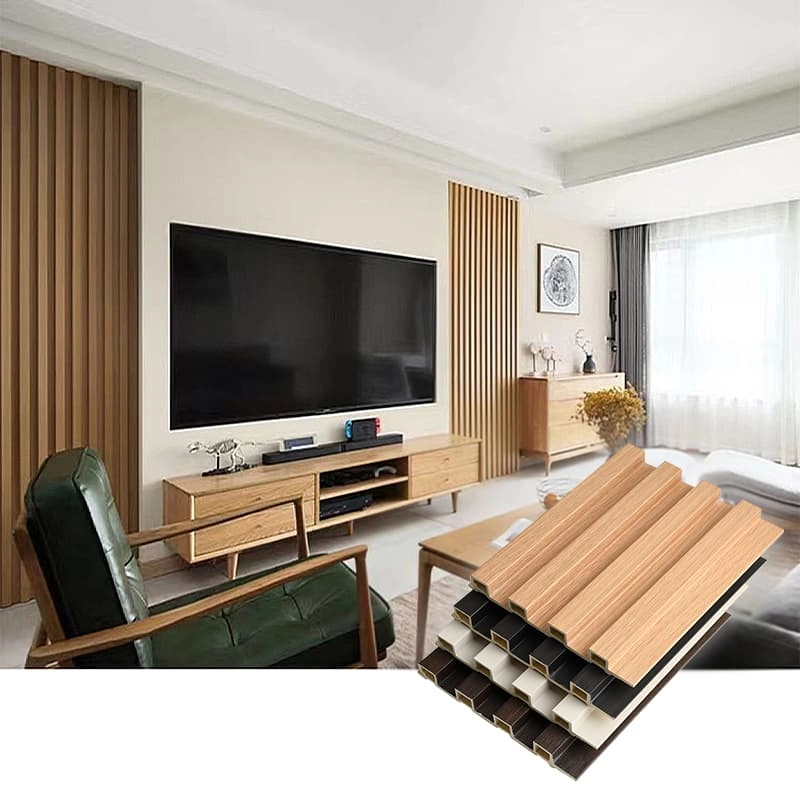
It's important to note that WPC exterior products are often formulated differently than interior wall panels. They typically require enhanced UV stabilizers to withstand prolonged sun exposure and may have different structural properties or thickness to handle outdoor conditions and loads (like foot traffic on a deck). Always ensure you are using a WPC product specifically designed and rated for outdoor composite applications like decking, siding, or fencing when planning interior and exterior projects. The material's adaptability makes it suitable for both indoor and outdoor environments, offering a cohesive look if desired. For instance, check out our co-extrusion wall boards suitable for robust applications.
Key Takeaways: WPC Wall Panels
- Composition: Made from a blend of wood fiber and recycled plastic, offering the look of wood with enhanced durability.
- Key Benefits: Highly water-resistant, durable, low maintenance, aesthetically versatile (flute, wood grain, 3D wall panels), and relatively easy to install.
- Applications: Ideal for interior wall cladding, accent walls, wainscoting, bathrooms, kitchens, and commercial spaces. Specially formulated versions exist for WPC exterior uses like decking and siding.
- Comparison: A balanced alternative to solid wood (less maintenance, better moisture resistance) and PVC wall panels (often better aesthetics and eco-profile).
- Installation: Often features user-friendly interlocking systems, potentially reducing labor time and costs.
- Sustainability: Generally considered an eco-friendly choice due to the use of recycled materials and longevity.
- Supplier Selection: Prioritize quality checks, certifications, clear communication, and samples when sourcing, especially internationally.
- Cost: Mid-range initial cost but offers excellent long-term value due to durability and low upkeep, making it a cost-effective solution.
WPC wall panels offer a compelling solution for modern interior (and exterior) design challenges, balancing beauty, performance, and practicality effectively in 2024.
